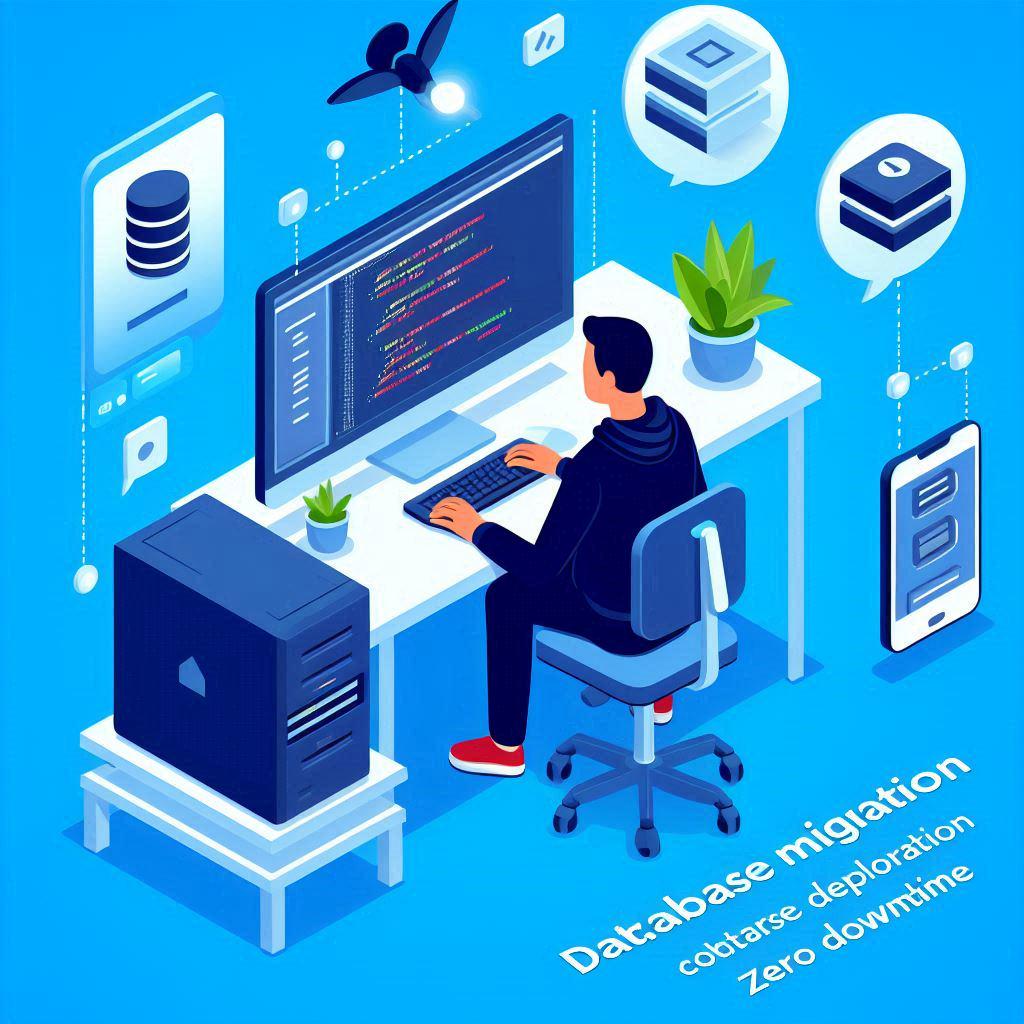Saat membuat API dengan Laravel, kamu pasti pernah bingung gimana cara memformat data agar tampil rapi dan konsisten. Data dari database sering kali tidak sesuai dengan format yang diinginkan frontend atau mobile app. Nah, di sinilah Laravel Resource berperan sebagai penyelamat!
Laravel Resource adalah fitur yang sangat powerful untuk mengubah model dan collection data menjadi format JSON yang terstruktur. Bayangkan Resource ini seperti “penerjemah” yang mengubah bahasa database menjadi bahasa yang mudah dipahami oleh frontend.
Apa yang Akan Kamu Pelajari?
Dalam tutorial ini, kamu akan belajar cara menggunakan Laravel Resource dari dasar sampai mahir. Mulai dari konsep basic sampai teknik advanced yang sering dipakai developer profesional. Semua dijelaskan dengan bahasa sederhana dan contoh praktis yang bisa langsung kamu coba.
Kenapa Harus Pakai Laravel Resource?
Sebelum masuk ke tutorial, mari kita pahami dulu kenapa Laravel Resource itu penting. Tanpa Resource, data yang kamu kirim ke frontend akan terlihat seperti ini:
{
"id": 1,
"name": "John Doe",
"email": "john@example.com",
"email_verified_at": "2025-01-15T08:30:00.000000Z",
"created_at": "2025-01-15T08:30:00.000000Z",
"updated_at": "2025-01-15T08:30:00.000000Z"
}Cukup berantakan kan? Ada field yang tidak perlu seperti email_verified_at, format tanggal yang aneh, dan struktur yang tidak konsisten. Dengan Laravel Resource, kamu bisa mengubahnya menjadi seperti ini:
{
"id": 1,
"name": "John Doe",
"email": "john@example.com",
"joined_date": "15 Januari 2025",
"profile_complete": true
}Jauh lebih rapi dan mudah dibaca, bukan?
Persiapan Sebelum Mulai
Pastikan kamu sudah punya hal-hal berikut:
- Laravel 8 atau yang lebih baru - Kalau belum install, bisa ikuti dokumentasi resmi Laravel
- PHP 8.0+ - Cek dengan command
php --versiondi terminal - Composer - Package manager untuk PHP
- Text editor seperti VS Code, PHPStorm, atau yang lain
- Postman atau Insomnia - Untuk testing API (opsional tapi recommended)
Kalau semua sudah siap, kita mulai petualangan belajar Laravel Resource!
Membuat Project Laravel Baru
Pertama-tama, kita buat project Laravel baru untuk praktik. Buka terminal dan jalankan command ini:
# Membuat project Laravel baru
composer create-project laravel/laravel resource-tutorial
# Masuk ke folder project
cd resource-tutorial
# Jalankan migration untuk membuat table users
php artisan migrateSetelah itu, kita akan punya project Laravel fresh dengan table users yang sudah siap dipakai.
Apa Itu Laravel Resource?
Laravel Resource adalah class khusus yang berfungsi untuk mengubah model atau collection data menjadi format JSON yang terstruktur. Think of it sebagai “template” yang menentukan bagaimana data akan ditampilkan ke user.
Ada dua jenis Resource di Laravel:
- Resource - Untuk single model (satu data)
- Resource Collection - Untuk multiple models (banyak data)
Resource ini sangat berguna untuk:
- Memformat data sesuai kebutuhan frontend
- Menyembunyikan field sensitif seperti password
- Menambahkan field computed atau virtual
- Mengubah format data (tanggal, angka, dll)
- Membuat struktur response yang konsisten
Membuat Resource Pertama Kamu
Mari kita buat Resource untuk model User. Jalankan command artisan berikut:
# Membuat UserResource
php artisan make:resource UserResourceCommand ini akan membuat file baru di app/Http/Resources/UserResource.php. Buka file tersebut dan kamu akan melihat struktur dasar seperti ini:
<?php
namespace App\Http\Resources;
use Illuminate\Http\Resources\Json\JsonResource;
class UserResource extends JsonResource
{
/**
* Transform the resource into an array.
*
* @param \Illuminate\Http\Request $request
* @return array|\Illuminate\Contracts\Support\Arrayable|\JsonSerializable
*/
public function toArray($request)
{
return parent::toArray($request);
}
}Saat ini Resource masih menggunakan parent::toArray($request) yang artinya mengembalikan semua field dari model tanpa modifikasi. Mari kita ubah agar lebih berguna:
<?php
namespace App\Http\Resources;
use Illuminate\Http\Resources\Json\JsonResource;
class UserResource extends JsonResource
{
public function toArray($request)
{
return [
'id' => $this->id,
'name' => $this->name,
'email' => $this->email,
'joined_date' => $this->created_at->format('d F Y'),
'profile_complete' => !is_null($this->email_verified_at),
];
}
}Sekarang Resource kita sudah memformat data dengan cara yang lebih user-friendly:
joined_datedalam format yang mudah dibacaprofile_completesebagai boolean berdasarkan email verification- Field sensitif seperti
email_verified_atdisembunyikan
Menggunakan Resource di Controller
Sekarang mari kita buat controller untuk menggunakan Resource yang sudah dibuat. Buat UserController baru:
# Membuat UserController
php artisan make:controller UserControllerBuka file app/Http/Controllers/UserController.php dan tambahkan method untuk menampilkan user:
<?php
namespace App\Http\Controllers;
use App\Http\Resources\UserResource;
use App\Models\User;
use Illuminate\Http\Request;
class UserController extends Controller
{
// Menampilkan single user
public function show(User $user)
{
return new UserResource($user);
}
// Menampilkan semua users
public function index()
{
$users = User::all();
return UserResource::collection($users);
}
}Perhatikan perbedaan antara:
new UserResource($user)- Untuk single modelUserResource::collection($users)- Untuk collection/multiple models
Menambahkan Routes API
Buka file routes/api.php dan tambahkan routes untuk UserController:
<?php
use App\Http\Controllers\UserController;
use Illuminate\Support\Facades\Route;
// Routes untuk User API
Route::get('/users', [UserController::class, 'index']);
Route::get('/users/{user}', [UserController::class, 'show']);Sekarang kamu bisa testing API dengan mengakses:
GET /api/users- Untuk semua usersGET /api/users/1- Untuk user dengan ID 1
Testing Resource dengan Seed Data
Sebelum testing, mari kita buat beberapa dummy data menggunakan factory. Jalankan command ini:
# Membuat 10 dummy users
php artisan tinkerDi dalam tinker, jalankan:
User::factory(10)->create();
exitSekarang kamu bisa testing API menggunakan browser atau Postman. Akses http://localhost:8000/api/users dan kamu akan melihat response yang sudah diformat dengan Resource.
Menambahkan Field Conditional
Salah satu kekuatan Resource adalah kemampuan untuk menampilkan field berdasarkan kondisi tertentu. Misalnya, kita hanya ingin menampilkan email jika user sudah verified:
public function toArray($request)
{
return [
'id' => $this->id,
'name' => $this->name,
'email' => $this->when($this->email_verified_at, $this->email),
'joined_date' => $this->created_at->format('d F Y'),
'profile_complete' => !is_null($this->email_verified_at),
'admin_info' => $this->when($request->user()->isAdmin(), [
'created_at' => $this->created_at,
'updated_at' => $this->updated_at,
]),
];
}Method $this->when() sangat berguna untuk conditional fields:
$this->when($condition, $value)- Tampilkan value jika condition true$this->whenNotNull($this->field)- Tampilkan jika field tidak null$this->whenLoaded('relation')- Tampilkan jika relation sudah di-load
Membuat Resource untuk Relationship
Sering kali kita perlu menampilkan data relationship dalam API. Misalnya user dengan posts-nya. Mari kita buat PostResource terlebih dahulu:
# Membuat PostResource
php artisan make:resource PostResourceIsi PostResource:
<?php
namespace App\Http\Resources;
use Illuminate\Http\Resources\Json\JsonResource;
class PostResource extends JsonResource
{
public function toArray($request)
{
return [
'id' => $this->id,
'title' => $this->title,
'excerpt' => substr($this->content, 0, 100) . '...',
'published_at' => $this->created_at->format('d M Y'),
'author' => new UserResource($this->whenLoaded('user')),
];
}
}Kemudian update UserResource untuk include posts:
public function toArray($request)
{
return [
'id' => $this->id,
'name' => $this->name,
'email' => $this->when($this->email_verified_at, $this->email),
'joined_date' => $this->created_at->format('d F Y'),
'profile_complete' => !is_null($this->email_verified_at),
'posts' => PostResource::collection($this->whenLoaded('posts')),
'posts_count' => $this->when($this->posts_count !== null, $this->posts_count),
];
}Menggunakan Resource Collection Kustom
Untuk collection yang kompleks, kita bisa membuat Resource Collection terpisah:
# Membuat UserCollection
php artisan make:resource UserCollectionIsi UserCollection:
<?php
namespace App\Http\Resources;
use Illuminate\Http\Resources\Json\ResourceCollection;
class UserCollection extends ResourceCollection
{
public function toArray($request)
{
return [
'data' => $this->collection,
'meta' => [
'total_users' => $this->collection->count(),
'verified_users' => $this->collection->where('email_verified_at', '!=', null)->count(),
'generated_at' => now()->format('Y-m-d H:i:s'),
],
];
}
}Kemudian gunakan di controller:
public function index()
{
$users = User::all();
return new UserCollection($users);
}Menambahkan Pagination
Untuk data besar, pagination sangat penting. Laravel Resource mendukung pagination secara otomatis:
public function index(Request $request)
{
$users = User::paginate($request->get('per_page', 15));
return UserResource::collection($users);
}Response akan otomatis include informasi pagination seperti current_page, last_page, total, dll.
Tips Error Handling dalam Resource
Saat menggunakan Resource, penting untuk handle error dengan baik:
public function toArray($request)
{
return [
'id' => $this->id,
'name' => $this->name,
'email' => $this->email,
'avatar' => $this->when($this->avatar, url('storage/' . $this->avatar)),
'posts_count' => $this->whenCounted('posts'),
'latest_post' => new PostResource($this->whenLoaded('latestPost')),
// Menggunakan try-catch untuk field yang mungkin error
'formatted_date' => $this->when($this->created_at, function() {
try {
return $this->created_at->format('d F Y');
} catch (\Exception $e) {
return 'Invalid date';
}
}),
];
}Performance Tips untuk Resource
Beberapa tips untuk optimasi performance:
- Eager Loading: Selalu load relationship yang dibutuhkan
public function index()
{
$users = User::with(['posts', 'profile'])->paginate(15);
return UserResource::collection($users);
}- Select Only Needed Fields: Jangan load semua field jika tidak perlu
$users = User::select(['id', 'name', 'email', 'created_at'])->get();- Use Resource Collection: Untuk data besar, gunakan Resource Collection yang dioptimasi
Debugging Resource
Untuk debugging Resource, kamu bisa menggunakan beberapa cara:
// 1. Dump data dalam Resource
public function toArray($request)
{
dump($this->resource); // Akan menampilkan data asli model
return [
'id' => $this->id,
'name' => $this->name,
// ... field lainnya
];
}
// 2. Log data untuk debugging
\Log::info('User Resource Data', $this->resource->toArray());Contoh Project Nyata: Blog API
Mari kita buat contoh project nyata - Blog API sederhana dengan Resource:
// PostResource.php
class PostResource extends JsonResource
{
public function toArray($request)
{
return [
'id' => $this->id,
'title' => $this->title,
'slug' => $this->slug,
'excerpt' => $this->excerpt,
'content' => $this->when($request->routeIs('posts.show'), $this->content),
'featured_image' => $this->when($this->featured_image,
url('storage/' . $this->featured_image)
),
'published_at' => $this->published_at->format('d F Y'),
'reading_time' => $this->reading_time . ' menit',
'author' => new UserResource($this->whenLoaded('author')),
'categories' => CategoryResource::collection($this->whenLoaded('categories')),
'tags' => $this->when($this->tags, $this->tags->pluck('name')),
'comments_count' => $this->whenCounted('comments'),
'is_published' => $this->published_at <= now(),
];
}
}Common Mistakes dan Cara Mengatasinya
- N+1 Query Problem: Selalu gunakan eager loading
- Exposing Sensitive Data: Double check field yang ditampilkan
- Not Using Conditional Fields: Gunakan
when()untuk optimasi - Hardcoded URLs: Gunakan
url()atauroute()helper - Not Handling Null Values: Selalu check null sebelum format data
Testing Resource dengan PHPUnit
Kamu juga bisa membuat test untuk Resource:
// tests/Feature/UserResourceTest.php
class UserResourceTest extends TestCase
{
public function test_user_resource_structure()
{
$user = User::factory()->create();
$resource = new UserResource($user);
$array = $resource->toArray(request());
$this->assertArrayHasKey('id', $array);
$this->assertArrayHasKey('name', $array);
$this->assertArrayHasKey('joined_date', $array);
$this->assertEquals($user->name, $array['name']);
}
}Kesimpulan dan Next Steps
Laravel Resource adalah tool yang sangat powerful untuk memformat data API. Dengan Resource, kamu bisa:
- Membuat API response yang konsisten dan terstruktur
- Menyembunyikan field sensitif dengan mudah
- Menambahkan field computed atau virtual
- Handle relationship data dengan elegant
- Optimasi performance dengan conditional loading
Langkah Selanjutnya:
- Praktek Lebih Banyak: Coba buat Resource untuk model lain dalam project kamu
- Pelajari API Transformer: Explore alternative seperti Fractal atau Spatie Laravel JSON API
- Implementasi Cache: Pelajari cara cache Resource untuk performance
- API Documentation: Gunakan tools seperti Laravel API Documentation Generator
- Testing: Pelajari cara testing API dengan Resource secara comprehensive
Ingat, programming itu seperti belajar naik sepeda - kamu perlu praktek terus-menerus sampai jadi muscle memory. Jangan takut untuk experiment dan buat mistake, karena dari situlah kamu akan belajar paling banyak.
Selamat coding dan semoga tutorial ini membantu kamu menguasai Laravel Resource! 🚀





